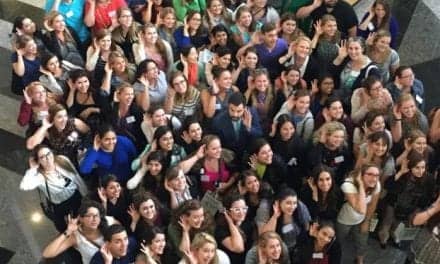I’m still trying to get my 76-year-old father to have his hearing tested and to seriously consider that he might benefit from wearing hearing devices. It can be much more difficult for people decades younger than him to recognize the need to visit a hearing care professional. And part of that is due to the stigma associated with hearing loss and hearing devices. Much has been done to diminish this stigma. But it’s a still a work in progress.
Survey Says…
A new study sheds light on why more young people don’t seek out hearing care. And one of the many factors that comes into play is stigma. But it’s improving, says Stephanie Czuhajewski, executive director of the ADA. In an interview about the study’s results, “A Study of Younger People’s Perceptions of Hearing Care,” she reflects on how understanding what people currently think about hearing care could help increase interest and access for those who need it.
People surveyed who already had hearing aids were happy with them, and wished they had gotten them sooner. Perhaps more awareness of younger hearing aid users’ positive experiences and quality of life improvement could help dispel the stigma associated with the devices.
And when other study participants were told of the links between delayed hearing care and dementia, many changed their minds and decided to get their hearing checked, trumping any stigma associated with hearing loss.
As detailed in the article “Cognition, Audition, & Repeated Cognitive Screenings” in this issue, the literature shows that untreated hearing loss tends to exacerbate cognitive decline in older, at-risk adults. So addressing hearing loss early and regularly visiting a hearing care professional throughout life could help prevent such issues down the line.
Podcast: Stephanie Czuhajewski on What Keeps Younger People from Seeking Hearing Care
Educational Approach
Clearly, education can have a positive impact on overcoming the stigma associated with hearing loss, which is certainly heartening.
But Czuhajewski cautions against fear mongering to bring about this result, and instead champions a positive approach. She favors emphasizing how maintaining hearing health benefits a person’s overall health and quality of life as a more effective way to change people’s attitudes about hearing health.
Unfortunately, it’s still an uphill battle to get the word out and convince younger people to recognize both the importance of addressing any hearing loss symptoms and of using the right tools for preventing hearing loss in noisy environments.

Technological Advancements and Growing Awareness
The good news is that technological advancements and awareness campaigns are making a positive impact as well.
In “Hearing Aid Innovations Help Silence the Stigma,” Dan Troast, AuD, celebrates the fact that “many hearing aids today resemble Bluetooth earbuds in both form and function, which are now so common that they carry no stigma.” Smaller, high-tech components allow for smaller, sleeker hearing aid designs that appeal to people who don’t want their hearing devices to look too obvious. And technology such as Auracast being used on in-ear devices by people with and without hearing loss will likely only further destigmatize hearing devices.
Troast also notes that compared to just 10 years ago, his audiology patients are much more knowedgeable about hearing technology and the deleterious effects of delaying hearing care, thanks to campaigns like World Hearing Day, highlighting the positives of audiology.
Let’s keep up the trend of lowering stigma around hearing loss.
— Melanie Hamilton-Basich
Photo: Dreamstime
Original citation for this article: Hamilton-Basich M, Still Fighting Hearing Loss Stigma. Hearing Review. 2024;31(6):06-07.





